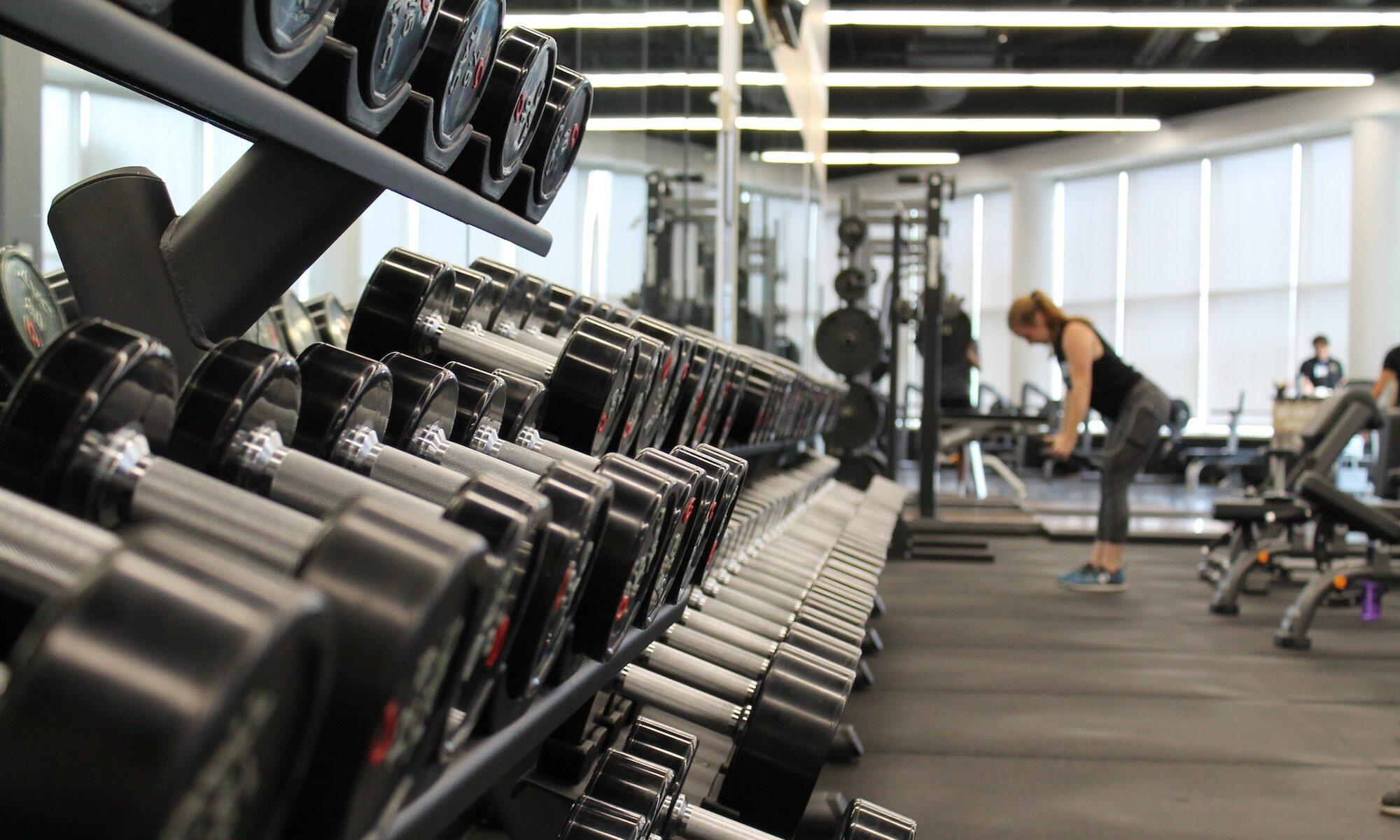Looking to stay fit and build strength from the comfort of your own home? Look no further! In this article, we will guide you through the steps on how to create a home strength training routine without the need for any fancy equipment. Whether you’re a beginner or an experienced fitness enthusiast, these simple and effective exercises will help you achieve your fitness goals without breaking the bank or needing to make a trip to the gym. Get ready to discover the secrets to building a strong and toned body right in your own living room!
Choosing the Right Exercises
Identify Your Goals
When choosing the right exercises for your home strength training routine, it’s essential to identify your goals. Are you looking to build muscle, lose weight, improve cardiovascular fitness, or simply maintain overall health? Knowing your goals will help you select exercises that are best suited to help you achieve them.
Consider Your Fitness Level
Consider your current fitness level when choosing exercises for your home strength training routine. If you’re a beginner, it’s important to start with exercises that are suitable for your level of fitness. As you progress, you can gradually increase the intensity and difficulty of your exercises.
Focus on Full-Body Movements
To get the most out of your home strength training routine, it’s beneficial to focus on full-body movements. Full-body exercises engage multiple muscle groups at once, helping you build strength and improve functional fitness. Examples of full-body movements include squats, push-ups, lunges, and burpees.
Include Both Compound and Isolation Exercises
A well-rounded home strength training routine should include both compound and isolation exercises. Compound exercises, such as deadlifts and bench presses, work multiple muscle groups simultaneously. Isolation exercises, such as bicep curls and tricep extensions, target specific muscle groups. Including a mix of both compound and isolation exercises will ensure that you work all your major muscle groups effectively.
Creating a Workout Schedule
Determine Your Training Frequency
When creating a workout schedule for your home strength training routine, it’s important to determine your training frequency. How many times a week can you realistically dedicate to exercise? Ideally, aim for at least three to four days of strength training per week. This frequency will allow your muscles enough time to recover and adapt to the training stimulus.
Allocate Enough Time for Each Session
Make sure to allocate enough time for each session in your home strength training routine. The duration of your workouts will depend on factors such as your fitness level, the exercises you choose, and the number of sets and reps you perform. Typically, aim for 45 minutes to an hour for each strength training session.
Include Rest Days
Rest days are crucial for muscle recovery and growth. Make sure to include rest days in your home strength training routine. On these days, you can focus on active recovery activities, such as light stretching, yoga, or gentle cardio. Giving your body regular rest days will help prevent overtraining and reduce the risk of injury.
Targeting Different Muscle Groups
Upper Body Exercises
To target your upper body in your home strength training routine, consider exercises such as push-ups, tricep dips, shoulder presses, and bent-over rows. These exercises will help you build strength and definition in your chest, back, shoulders, and arms.
Lower Body Exercises
For targeting your lower body, exercises like squats, lunges, glute bridges, and calf raises are effective. These exercises work your quadriceps, hamstrings, glutes, and calves, helping to build lower body strength and improve overall stability and balance.
Core Exercises
Building a strong core is important for overall strength and stability. Include core exercises like planks, Russian twists, bicycle crunches, and mountain climbers in your home strength training routine. These exercises engage your abs, obliques, and lower back, helping you develop a strong and stable core.
Warm-up and Cool-down
Importance of a Proper Warm-up
Before diving into your home strength training routine, it’s crucial to perform a proper warm-up. A dynamic warm-up increases blood flow to your muscles, raises body temperature, improves joint mobility, and prepares your body for the upcoming workout. Spend about 10 minutes performing dynamic warm-up exercises like arm circles, high knees, lunges with a twist, and shoulder rotations.
Dynamic Stretching Routine
Dynamic stretching is an excellent way to loosen up your muscles and increase range of motion before your workout. Incorporate dynamic stretches such as leg swings, walking toe touches, hip circles, and arm circles into your warm-up routine. Make sure to perform these stretches in a controlled and fluid manner.
Cool-down Exercises
After completing your home strength training routine, it’s important to cool down properly. Cooling down helps your heart rate and breathing return to normal gradually, prevents blood pooling in your muscles, and reduces the risk of post-workout soreness. Spend about 10 minutes performing low-intensity exercises like walking, static stretches, and foam rolling to promote muscle recovery.
Progression and Tracking
Gradually Increase Intensity and Difficulty
To continue making progress in your home strength training routine, it’s crucial to gradually increase the intensity and difficulty of your exercises. This can be done by increasing the weight/resistance, the number of reps and sets, or by incorporating more challenging variations of the exercises. By consistently challenging your muscles, you’ll ensure continuous improvement and avoid plateauing.
Track Your Progress
Tracking your progress is essential for staying motivated and seeing how far you’ve come. Keep a record of your workouts, noting the exercises, sets, reps, and weights used. You can also take measurements, such as body weight, body fat percentage, and body measurements. Having these measurements will help you monitor your progress and make adjustments to your home strength training routine as needed.
Tips for Safety and Injury Prevention
Listen to Your Body
When engaging in any form of exercise, it’s essential to listen to your body. If something doesn’t feel right, it’s important to stop and assess the situation. Pushing through pain or discomfort can lead to injuries. Pay attention to any warning signs such as sharp pain, dizziness, or shortness of breath, and modify or stop the exercise if necessary.
Pay Attention to Proper Form
Proper form is crucial for preventing injuries and maximizing the benefits of your home strength training routine. Take the time to learn the correct form for each exercise and focus on maintaining it throughout your workouts. If you’re unsure about proper form, consider consulting a fitness professional or utilizing online resources that demonstrate correct technique.
Start with Lighter Weights or Bodyweight
If you’re new to strength training, it’s recommended to start with lighter weights or even just your own bodyweight. This allows your muscles, joints, and connective tissues to adapt gradually to the new stimulus and reduces the risk of injury. As you gain strength and confidence, you can gradually increase the resistance or weight used.
Use Modifications if Needed
Not all exercises may be suitable for everyone due to individual physical limitations or existing injuries. It’s important to listen to your body and make modifications as needed. For example, if you have knee pain, you can substitute squats with seated leg presses or modify push-ups by performing them against a wall or an elevated surface.
Incorporate Rest and Recovery
Rest and recovery are essential components of any effective strength training routine. Make sure to allow your muscles at least 48 hours of rest before working them again. This allows for proper muscle repair and growth. Additionally, prioritize getting enough sleep, as it plays a crucial role in muscle recovery and overall performance.
Making the Most of Limited Space
Utilize Bodyweight Exercises
When space is limited, bodyweight exercises become your best friend. Exercises like push-ups, squats, lunges, burpees, mountain climbers, and planks require minimal space but still provide a challenging full-body workout. These exercises utilize your body weight as resistance, making them effective for building strength and endurance.
Consider Using Resistance Bands or Dumbbells
Resistance bands and dumbbells are versatile and compact pieces of equipment that can greatly enhance your home strength training routine. They take up minimal space and allow for a wide range of exercises targeting different muscle groups. Resistance bands come in various levels of resistance, while dumbbells can be selected based on your current strength and fitness level.
Use Furniture or Household Items for Support
When space is limited, get creative and use furniture or household items for support during exercises. For example, a sturdy chair can be used for tricep dips, step-ups, or assisted pistol squats. A wall can provide stability for exercises like wall sits or wall push-ups. By utilizing what you have in your environment, you can make the most of your limited space.
Finding Motivation and Accountability
Set Clear Goals
Setting clear and achievable goals is the key to staying motivated and accountable in your home strength training routine. Whether it’s a certain weight you want to lift, a milestone you want to reach, or a specific fitness event you’re training for, having a goal gives you something to work towards. Write down your goals and regularly revisit them to stay focused and motivated.
Find a Workout Buddy or Join Online Communities
Having a workout buddy or being part of online fitness communities can provide a tremendous amount of motivation and accountability. Partnering up with someone who has similar fitness goals can make your home strength training routine more enjoyable and help you stay motivated. If in-person options are limited, consider joining online fitness communities where you can share your progress, ask questions, and find support.
Reward Yourself for Achievements
Don’t forget to celebrate your achievements along the way. Setting small milestones and rewarding yourself when you reach them can help keep you motivated and make your home strength training routine more enjoyable. Rewards can be as simple as treating yourself to a new workout outfit, a massage, or a day of relaxation. Celebrating your progress will help you maintain a positive mindset and continue working towards your goals.
Developing a Routine
Create a Structured Plan
To ensure consistency and maximize results, create a structured plan for your home strength training routine. This plan can include the exercises, sets, reps, and rest periods for each workout. Having a plan in place eliminates guesswork and keeps you focused during your workouts. It’s also important to periodically update and adjust your plan to keep challenging your muscles and prevent boredom.
Mix up Exercises
To keep your home strength training routine interesting and prevent plateaus, it’s important to mix up your exercises regularly. Incorporate a variety of exercises that target different muscle groups and use different movement patterns. This not only provides a well-rounded workout but also keeps your muscles guessing and prevents them from adapting to the same routine.
Schedule Regular Workouts
Consistency is key when it comes to building strength and achieving your fitness goals. Schedule regular workouts into your daily or weekly routine and treat them as non-negotiable appointments. By making exercise a priority and sticking to a regular schedule, you’ll develop discipline and establish a habit that becomes second nature.
Flexibility in Modifying the Plan
While having a structured plan is important, it’s also essential to be flexible and adapt to changes in your schedule or circumstances. Life can sometimes throw curveballs, and it’s okay to modify your home strength training routine when needed. If you’re short on time, consider doing a condensed workout or focusing on specific muscle groups. The key is to maintain consistency and keep making progress, even if it means adjusting your original plan.
Options for Progression and Variation
Increase Repetitions or Sets
A simple way to progress in your home strength training routine is by increasing the number of repetitions or sets performed for each exercise. Gradually add more reps or sets to challenge your muscles and increase the overall volume of your workouts. By progressively overloading your muscles, you’ll continue to stimulate growth and improvements.
Modify Exercise Difficulty
As you become more proficient with certain exercises, you can modify their difficulty to keep making progress. For example, if regular push-ups have become too easy, try performing decline push-ups by elevating your feet. Alternatively, you can add instability by using a Swiss ball or performing single-arm variations. Modifying exercise difficulty keeps your workouts challenging and prevents stagnation.
Explore Different Exercise Variations
Exploring different exercise variations is an excellent way to add variety and challenge to your home strength training routine. For example, if you’ve been doing regular squats, try Bulgarian split squats or pistol squats. If you’ve been doing standard push-ups, explore different hand placement variations or try push-up variations like diamond push-ups or pike push-ups. Experimenting with different exercises will keep your workouts exciting and ensure that your muscles are constantly adapting.
Building a home strength training routine without equipment is not only possible but also highly effective. By following the guidelines and tips outlined in this article, you can design a comprehensive and challenging workout plan that targets all your major muscle groups, progresses over time, prevents injuries, and keeps you motivated. So, get started, embrace the power of bodyweight exercises and minimal equipment, and start building strength and transforming your body from the comfort of your own home.


